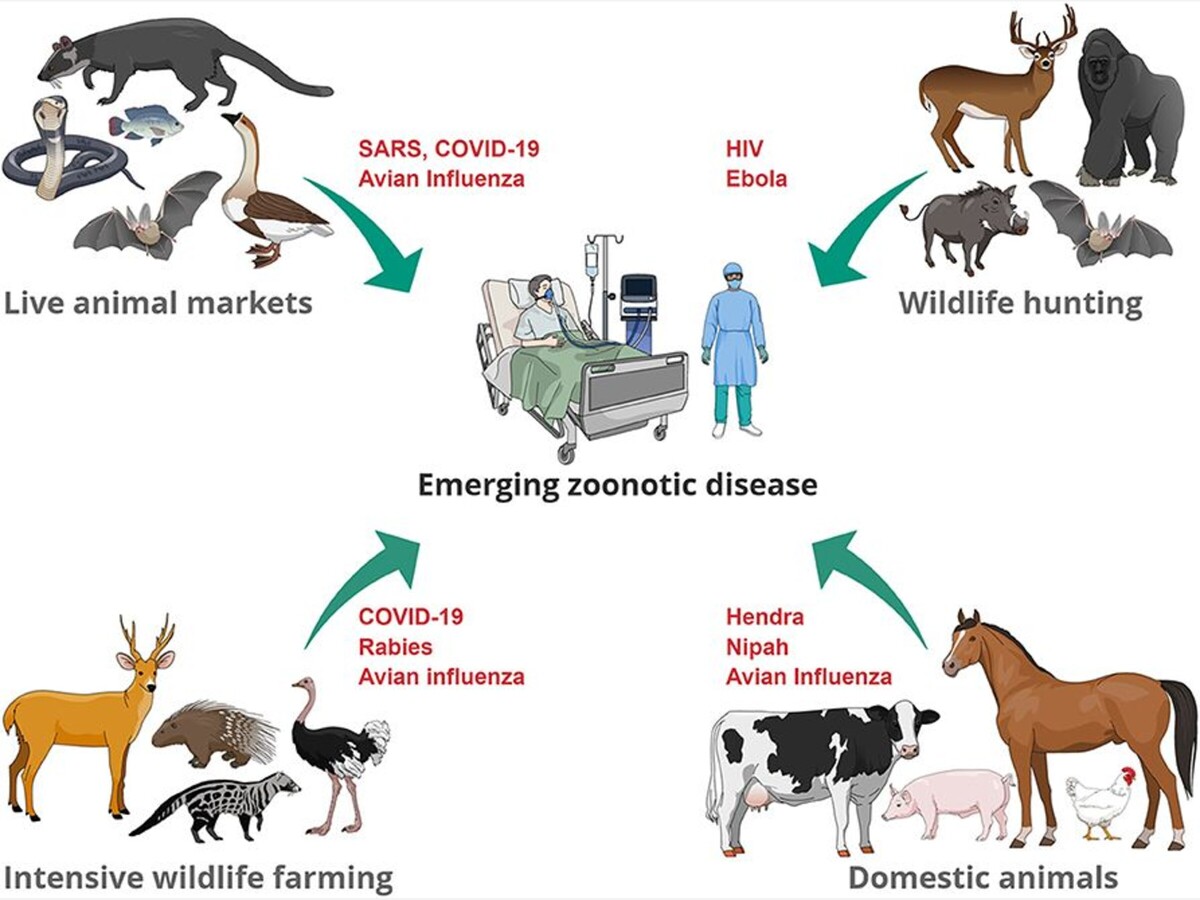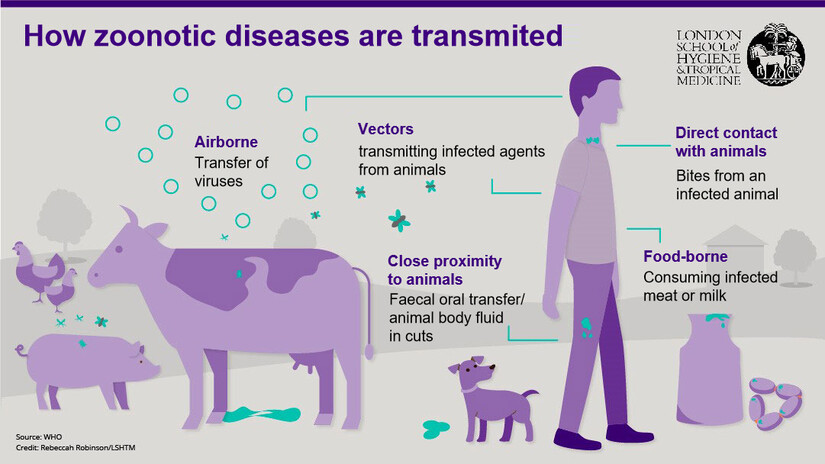Image


Believe in God or not ... humans and animals don't exist in the same space and were not meant to. There is very little truth in the life of an animal being 'the same as' a human life, and the similarities don't carry enough weight to justify encroaching on wildlife and being carriers of blood-borne or airborne diseases that are natural to them, but will also kill thousands, even millions, of human beings.
Using humans to test cures for animal illnesses was never a good idea, and the bottom line on COVID-19 as a lab experiment gone awry, is that it started more than 10 years ago and too many people still think it just "popped up from out of nowhere."
Nicola Principi, Samantha Bosis, and Susanna EspositoAuthor affiliations: University of Milan, Milan, Italy; and Fondazione Istituto Di Ricovero e Cura a Carattere Scientifico “Ospedale Maggiore Policlinico, Mangiagalli e Regine Elena,” Milan
Human coronaviruses (HCoVs) have been known since the late 1960s as a group of viruses capable of infecting humans and animals (1). In a wide variety of animals, they cause respiratory, enteric, hepatic, and neurologic diseases that, in some cases (especially when they infect the young), can be severe (1). However, until the pathogen identified as the cause of severe acute respiratory syndrome (SARS) was isolated (2), the previously known HCoVs (HCoV-229E and HCoV-OC43) were considered to play a marginal clinical role in pediatrics. This conclusion was made mainly because, on the basis of the data available at the time, HCoVs were believed to cause only mild upper respiratory tract infections (URTIs) in children and that only in premature infants and children with a chronic underlying disease could severe lower respiratory tract infections (LRTIs) develop (3). Moreover, no importance was placed on reports that suggested a possible relationship with the development of extrarespiratory problems, including central nervous system (CNS) involvement, in which HCoVs can persist and play a role in causing chronic neurologic disorders (4). Consequently, the circulation of HCoVs was not monitored, and no attempt was made to develop vaccines or drugs that were active against the viruses.
The identification of SARS-CoV and the isolation of 2 novel HCoVs in humans (HCoV-NL63 and HCoV-HKU1) (5,6) have led to several studies of the epidemiology and clinical and socioeconomic effects of HCoV infections, which were greatly facilitated by the availability of modern molecular biology methods that enable direct viral identification in respiratory secretions (7–26). Interest was strengthened by the demonstration that SARS could be considered a zoonotic infection because, after it was described and the causative agent identified from patients in the People’s Republic of China, SARS-CoV–like viruses were isolated from caged animals, including palm civets and raccoon dogs in wildlife markets of the same Chinese province (27). This finding and the subsequent independent discovery of SARS-CoV–like viruses in horseshoe bats indicated that wild animals could be the reservoir of these viruses and that, in a suitable environment, they could infect humans and cause epidemics. New data concerning old and the new HCoVs raise the question of whether HCoVs may be more clinically important in children than was previously thought, thus indicating the need for a systematic evaluation of their circulation and the availability of preventive and therapeutic measures.
Using bat serums from dead or live bats, boxing kangaroos, wrestling 'gators, hunting and eating of snakes, the consuming of all manner of animals (frogs, crocodiles, etc) from outdoor markets rather than from food processing and sterilization plants -whether cooked or consumed raw-, spending extraordinary amounts of time developing relationships with chimps and gorillas and apes, and all other abnormal human-to-animal contact is most assuredly at the root of these infections and zoonotic diseases.
PLoS One. 2014; 9(2): e89055.Published online 2014 Feb 28. doi: 10.1371/journal.pone.0089055PMCID: PMC3938448PMID: 24586500
Reverse Zoonotic Disease Transmission (Zooanthroponosis): A Systematic Review of Seldom-Documented Human Biological Threats to Animals

QUOTE: 'Today, animal-borne diseases cause an incredible 2.4 billion cases of human illness each year and 2.2 million deaths. It's about to get far worse.
Zoonotic diseases like Covid-19 are becoming riskier to humans because of our own actions. Our effect on the climate, encroachment on wildlife habitats and global travel help circulate animal-borne diseases further than ever before. Combined with urbanisation, overpopulation and global trade, we’ve created the ideal world for pandemics to thrive.
In this multimedia series, we travel six continents to learn about six different animals that carry diseases that could cause the next pandemic. And we meet the scientists on the front lines who are working to warn the world about them. From Mers-carrying camels in Africa to the pigs with influenza in Europe, we meet the animals and the diseases with the biggest pandemic potential, and learn what we can do to stop them, before it’s too late.'...
In the final analysis, animals and humans simply were not meant to spend time 'cohabitating' in any manner. One can always suspect that any close human connections to animals in non-sterile uncontrolled environments are going to lead to certain specific ecological disasters.
###